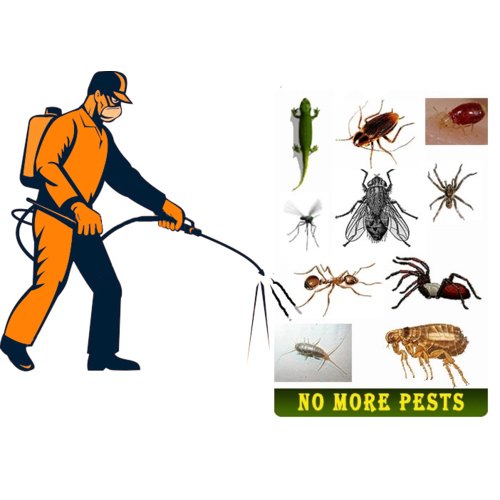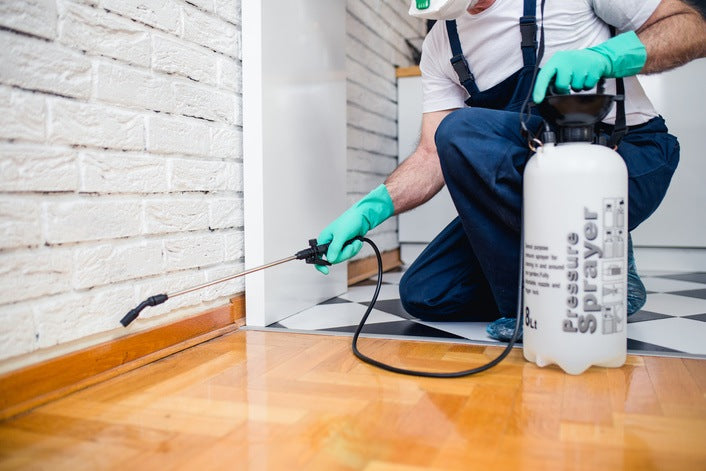Quick Response Times for Pest Issues with Pest Control Lockhart
Quick Response Times for Pest Issues with Pest Control Lockhart
Blog Article
Discovering Invasion and Treatment Methods in the World of Pest Control
The landscape of parasite control includes a myriad of challenges, specifically as invasions of usual family pests remain to develop. Understanding the habits and reproductive patterns of these nuisances is critical for establishing reliable treatment approaches. By integrating safety nets with advanced administration strategies, such as Integrated Insect Monitoring (IPM), property owners can much better protect their settings. The efficiency of these approaches may vary dramatically based on specific scenarios. What hidden factors add to the success or failing of these approaches in different settings?

Typical Family Vermin
When it involves managing our space, comprehending typical family bugs is critical. These pests not only disrupt our comfort but can also pose health risks and damage home. The most common home insects include ants, cockroaches, rodents, termites, and bed bugs.
Ants, often seen foraging in cooking areas, can pollute food and establish huge nests. Rodents, consisting of mice and rats, can cause architectural damage and lug illness like hantavirus and salmonella.
Recognizing the indicators of these bugs, such as droppings, nests, or bite marks, is crucial for very early intervention (Pest Control Lockhart). Appropriate sanitation techniques, sealing access points, and keeping a clutter-free atmosphere work preventative procedures. By identifying these usual home parasites and comprehending their behaviors, house owners can take proactive actions to mitigate problems, ensuring a much healthier living environment
Comprehending Parasite Infestations
Insect problems can escalate swiftly, turning a minor aggravation into a considerable problem if not resolved promptly. Comprehending the nature of these problems is essential for efficient monitoring. Pests can get into household and commercial areas for numerous factors, including the search for food, sanctuary, or reproducing premises. Common elements adding to problems consist of inadequate sanitation, structural vulnerabilities, and seasonal modifications that drive parasites inside.
Determining the sort of bug is necessary, as various types display different habits and reproductive rates. Rats might establish nests in covert areas while insects like roaches prosper in moist atmospheres. Early detection often rests on acknowledging indications such as droppings, nibble marks, or unusual audios, which can suggest a problem before it comes to be serious.
Cozy, humid environments can facilitate the fast development of insect populaces, while adjustments in landscaping or building and construction can inadvertently produce helpful environments. An educated strategy to understanding these characteristics lays the foundation for effective bug monitoring strategies in the future.
Treatment Approaches and Strategies
Effective treatment approaches and strategies are important for alleviating parasite infestations and restoring a risk-free setting. A complex approach is typically best, integrating chemical, organic, and mechanical techniques customized to the details pest and the seriousness of the invasion.
Chemical treatments consist of the usage of pesticides and herbicides, which can properly remove pests. Appropriate application and adherence to my company security guidelines are important to reduce dangers to people and non-target organisms. Integrated Insect Management (IPM) encourages the judicious use of chemicals as a last resource, counting rather on tracking and threshold levels to determine intervention demands.
Biological control methods entail introducing all-natural killers or parasites to lower insect populations. This technique is progressively popular, especially in agricultural setups, as it promotes ecological sustainability.
Mechanical techniques, such as catches and barriers, provide instant relief from parasites without introducing chemicals. Alternatives include sticky catches for insects or physical obstacles for rodents.
Inevitably, the choice of therapy method Source must consider the details insect, the setting, and potential influence on human wellness and communities. A well balanced combination of these methods can effectively take care of infestations while promoting lasting insect control options.
Preventive Procedures for Residence
Proactively dealing with bug issues before they intensify is essential for maintaining a healthy and balanced home setting (Pest Control Lockhart). Implementing efficient safety nets can considerably minimize the chance of infestations, eventually securing both your home and wellness

Correct landscape design additionally plays a crucial role in avoidance. Maintaining hedges and trees cut away from your home minimizes the possibilities of bugs discovering their method indoors. Ensure that drain systems are operating efficiently to protect against standing water, which can draw in insects and various other insects.
Finally, regular assessments are recommended. Frequently looking for signs of bug activity enables for very early treatment. By adopting these preventive actions, home owners can produce an environment that is much less welcoming to pests, therefore improving their overall top quality of life and decreasing the need for substantial insect control treatments.
Industrial Parasite Control Methods
A comprehensive strategy to commercial parasite control is vital for businesses intending to keep a risk-free and sanitary atmosphere. Reliable techniques entail a combination of routine examinations, worker training, and the execution of Integrated Insect Administration (IPM) practices.
Routine inspections allow very early detection of insect task, enabling timely treatment. Organizations ought to establish a regular schedule for these evaluations, concentrating on risky locations such as kitchens, storeroom, and garbage disposal sites. Worker training is similarly important; staff should be enlightened on the indications of insect invasions and the relevance of reporting them immediately.
Executing IPM methods assists minimize pest issues sustainably. This includes habitat adjustment, such as sealing entrance factors and minimizing mess, along with using all-natural deterrents prior to considering chemical therapies.

Moreover, collaborating with a licensed pest control company makes sure access to professional understanding and sophisticated treatment options. This partnership can lead to customized pest control intends customized to the certain requirements of the service, lessening dangers and enhancing overall efficiency. Inevitably, an aggressive and educated method fosters a pest-free environment, see post guarding both public wellness and service credibility.
Conclusion
In conclusion, reliable bug control necessitates a comprehensive understanding of usual family insects and their actions, paired with targeted treatment approaches. Carrying out precautionary measures along with treatment strategies such as Integrated Bug Management and organic control improves the ability to alleviate infestations. Normal evaluations and a mix of chemical and mechanical options further add to maintaining pest-free settings. Ultimately, a well-shaped method to pest monitoring is important for guarding living rooms from unwanted burglars.
Report this page